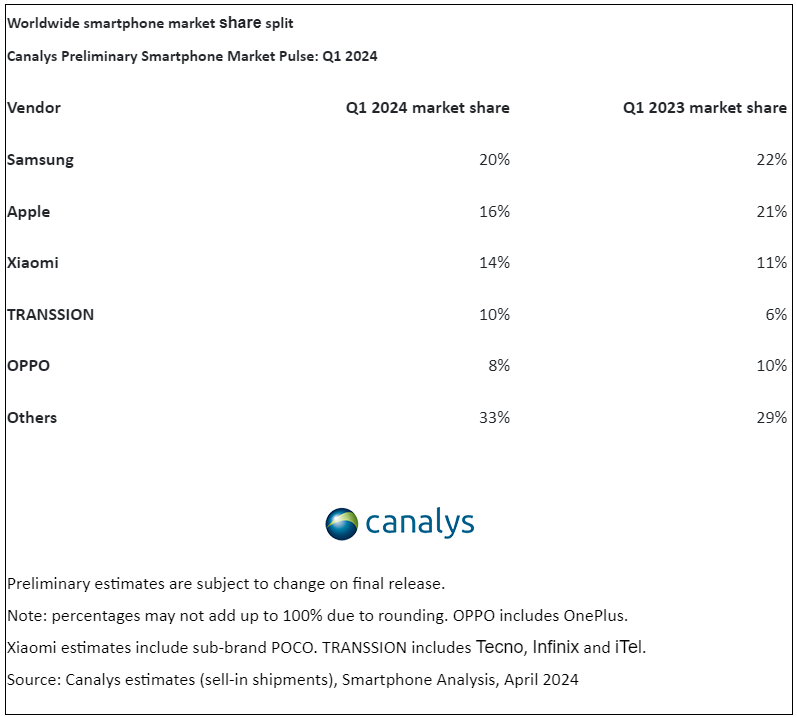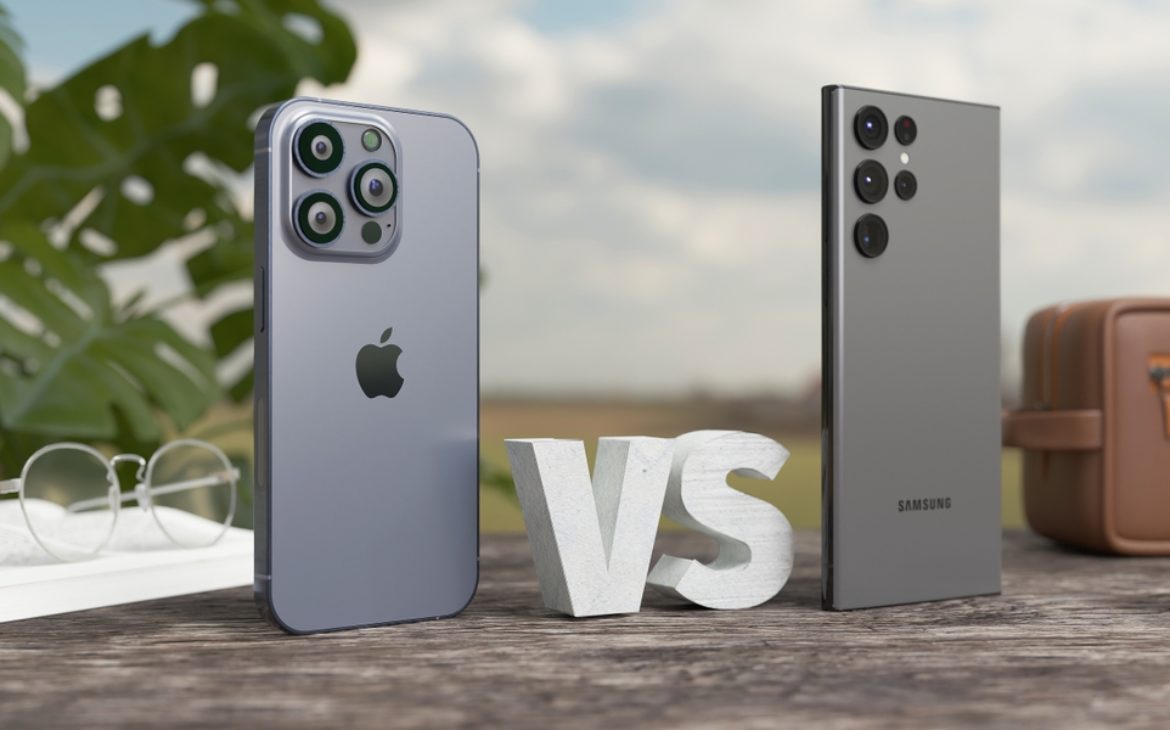In a notable development, Samsung reclaimed its position as the leading smartphone vendor, capturing a significant 20% share of the market. This achievement can be attributed to the popularity of the company’s Galaxy AI series among consumers.
Following closely behind, Apple secured the second spot with a 16% market share. However, the American tech giant faced challenges in some strategic markets, impacting its overall performance in this quarter.
Xiaomi emerged as the third-largest smartphone vendor, boasting a 14% market share. The company’s success was driven by the strong performance of its competitive, newly launched Redmi A3, which gained traction among consumers.
Meanwhile, Transsion held the fourth position with a 10% share of the market, demonstrating its continued presence in the competitive smartphone landscape. Oppo rounded out the top five vendors with an 8% market share.

Overall, the growth in smartphone shipments underscores the resilience of the mobile industry and its ability to adapt to evolving consumer preferences and market dynamics. As the global economy continues to recover, smartphone manufacturers are poised to capitalize on the growing demand for innovative and feature-rich devices.
